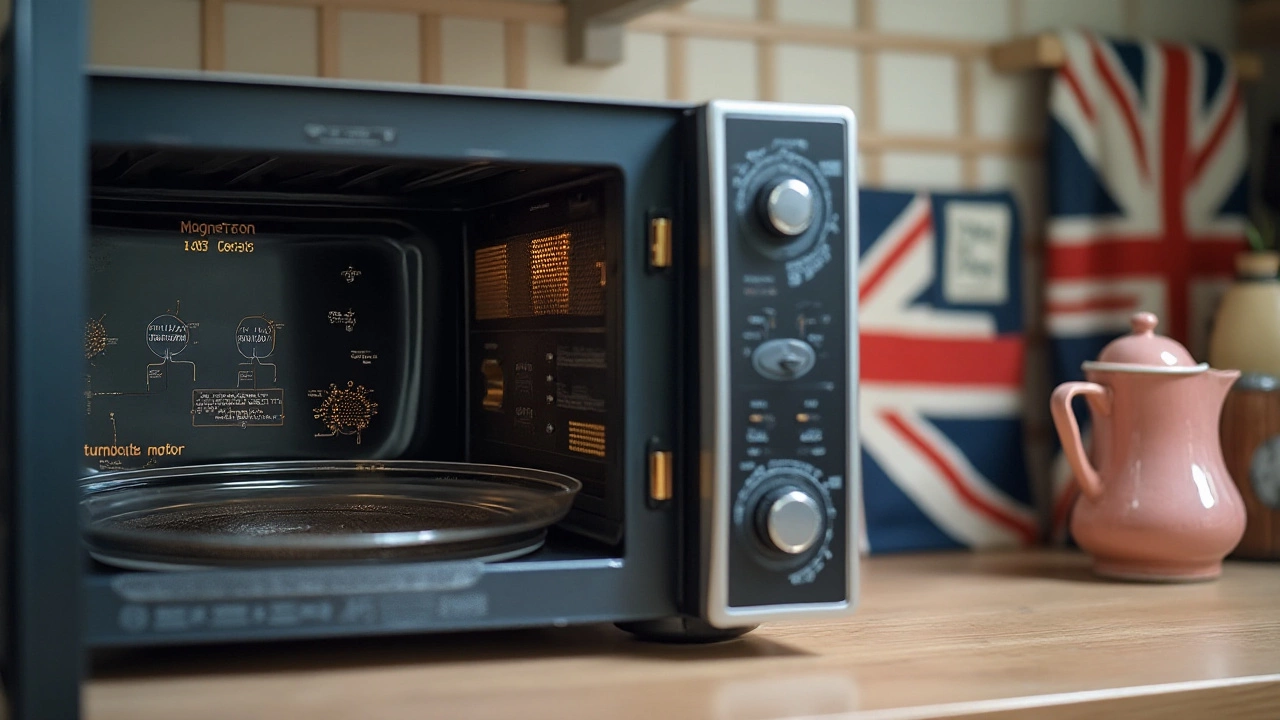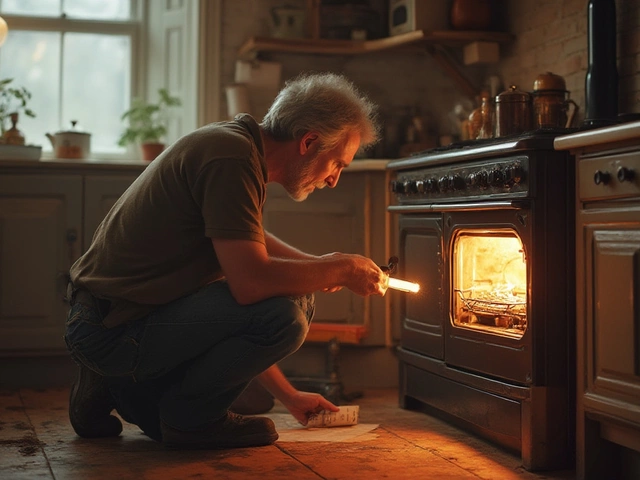Many of us can't imagine going a day without the convenience of our trusty microwave. From reheating leftovers to popping popcorn, this humble appliance works wonders with just a press of a button. But what happens when your microwave decides to take a break and won't heat your food like it used to? Panic might set in, but fear not – tackling microwave issues doesn't have to be daunting.
This guide will equip you with knowledge about the key components that make your microwave tick, helping you diagnose the problems that commonly plague these machines. Whether you're dealing with a sparking cavity, strange noises, or a microwave that refuses to start, we'll walk you through safe, effective strategies for repairs you can do yourself. And, on the off chance the problem is out of your hands, we'll help you understand when it's best to seek professional help. Let's demystify the art of microwave repair together and get you confidently back to warming meals in no time.
- Understanding Microwave Components
- Identifying Common Problems
- DIY Repair Techniques
- When to Call a Professional
Understanding Microwave Components
Microwave ovens have nestled their way into countless kitchens around the world, simplifying meal preparation with remarkable speed. They are complex devices that disguise their intricate engineering under a simple exterior. Understanding the inner workings of your microwave can be empowering, especially when something goes awry. At the heart of every microwave oven is the magnetron. This pivotal component converts electrical energy into the microwaves that heat your food. It’s supported by a high-voltage transformer which steps up the electrical currents to the levels needed to power the magnetron.
Another key player in the microwave's opera is the control board. Think of it as the brain of the appliance. It's responsible for regulating the timing, power levels, and various cooking functions. Many modern microwaves incorporate sophisticated control panels that are crucial in precision cooking. When this component malfunctions, you may notice erratic behavior or complete inability to cook food according to your commands. Understanding how the control board interacts with other components can give significant insights into potential issues.
Convincingly intertwined with the electronics are the cooling fans and thermal sensors. They ensure the microwave doesn’t overheat during operation. Without these safety features, the appliance would be prone to potentially hazardous situations. The cooling fan prevents the magnetron from frying itself, while sensors cut off power if the microwave's internal environment gets too hot. On many occasions where a microwave stops mid-cycle, it's these safety systems doing their job. Identifying the seamless interaction between heating and safety systems is fundamental to understanding why microwaves are quite resilient so long as their components are healthy.
You might consider these components rather straightforward, yet they each hold a piece of the puzzle to ensuring your appliance runs smoothly. An experienced artisan in electronic repair once noted,
The complexity of a machine lies not in its size, but in the synchronicity of tiny components interwoven in harmonious function. – Technician's Journal. Add into this mix the very touch you maneuver daily, the door switch assemblies. These ensure the microwave only runs when the door is securely shut. It is a small, seemingly insignificant part, yet critical to prevent radiation leakage and ensure the user's safety; thus, it must be in perfect working order.
Maintenance of these parts can extend the life of your microwave and improve its efficiency. Keeping the interior and exterior clean, ensuring that vent pathways aren’t blocked, and keeping an eye out for unusual sounds or smells are small steps that can spare you from a major repair. Understanding how each component contributes to the array of functionalities at your disposal is critical, and it rings true for almost any appliance. Grasping these small elements opens an avenue to better diagnosing issues and even repairing them, offering the chance to reduce electronic waste and save costs at home.

Identifying Common Problems
Microwave ovens are remarkable inventions, consistently performing a wide range of cooking tasks with unparalleled speed and efficiency. However, like all appliances, they come with their own set of quirks and issues that owners may encounter over time. One common problem is when the microwave doesn't heat, and this can stem from a defective magnetron. The magnetron is the heart of your microwave; it generates the radio waves that heat your food. When it fails, it often needs replacement, as repairs are generally not possible for this component. In other cases, issues with the high voltage diode or capacitor can also prevent heating.
Noisy microwaves can be another sore point. Rattling or humming can indicate a range of issues from worn motor bearings to a faulty high voltage diode. Sometimes the noise is just a loose turntable or the rollers it sits on. It's amazing how such small components can cause such an audible disturbance. If you catch yourself cringing every time you microwave your oatmeal, a thorough check of these parts might be in order. Another intriguing fault is the microwave sparking, which can seem alarming. This often occurs due to a buildup of food splatter on the waveguide cover or a worn-out stirrer. Ensuring cleanliness within your microwave could surprisingly be the simple solution to this startling issue.
Door issues are not just inconvenient but pose safety hazards as well. A microwave that runs when the door is ajar or won't start due to perceived door problems might have a broken door switch or an alignment problem. It's crucial to handle these situations carefully as the microwave's interlocking mechanism is key to its safe operation. In some rare instances, the display or control board might malfunction, leading to erratic behavior. When buttons fail to respond or faulty codes keep appearing, this could indicate the need for an electronic fix or replacement.
An interesting statistic from consumer reports suggests that over 20% of microwave issues relate to power problems. This includes the microwave not turning on at all, which can often result from a simple problem like a faulty door switch, tripped thermal cut-out, or a blown fuse. These components might sound technical, but checking a fuse is as straightforward as ensuring proper connectivity and continuity using a multimeter.
According to the Energy Information Administration, "Microwave ovens are found in 90% of American households, making their proper functioning crucial for daily convenience."
It's essential to examine and understand these common pitfalls as they form the basis of microwave repair activities every DIY enthusiast should familiarize themselves with. Thus, getting to know the quirks of your microwave, and determining which category your current problem falls into, sets a solid foundation for troubleshooting. With this knowledge in hand, you're more equipped to handle the troubleshooting adventure that awaits!

DIY Repair Techniques
Embarking on the journey of DIY microwave repair can be not only an economically savvy decision but also quite a fulfilling experience. Many common issues can be tackled without an expert's touch, and with the right guidance, anyone can learn the inner workings of this beloved appliance. The first step, however, is to ensure safety. Always, without fail, unplug your microwave before attempting any kind of repair. Microwaves store up a significant electrical charge within their capacitor, and contact with this component while it's still charged can be extremely dangerous. It’s important to give it enough time to discharge, which typically means waiting several days before opening the unit if you suspect an issue with the high-voltage components.
Once safety is accounted for, you're ready to dive into diagnosing problems. A common issue many face is the microwave not heating. This usually directs attention to the magnetron, which is the component tasked with generating microwave energy. A faulty magnetron can be replaced at home, but it requires precise handling. Remove the casing of the microwave to access the internal components, then locate the magnetron. It’s usually housed on the side or along the top of the microwave. Carefully disconnect the wires and unscrew it from its mount. Place a new magnetron in its place, refasten it with screws, and carefully reconnect the wiring. This task requires patience, meticulousness, and a bit of courage, but it's entirely doable.
Another issue might be a microwave that doesn’t turn on at all. Before thinking the worst, check simpler components that could be the culprits, such as door switches or the thermal fuse. The door switch, when malfunctioning, tricks the system into thinking the door remains open when it is not. A multimeter can be employed to test for continuity. If it’s found lacking, replacing the switch can restore microwave functionality. Simply unscrew it from the mounted position, disconnect the wires, and integrate the new switch.
Small Parts, Big Impact: Gaskets and Turntables
Sometimes the devil's in the details. While looking towards larger components for answers, don't overlook the smaller, yet crucial, elements such as gaskets and the turntable motor. If your microwave is unusually noisy or the turntable isn’t spinning, inspect the small gears or the motor that operates it. These parts wear down over time and require occasional replacement. The turntable motor tends to be located at the bottom side of the microwave, so it may necessitate turning the unit over with care. In replacing the motor, make sure to gently remove the turntable from inside, unscrew the bottom panel, and replace the old motor with a new one by disconnecting and reattaching the wiring.
Here's something to remember: before starting any repair, always check the manufacturer's warranty. Opening your appliance could sometimes void warranties, and ensuring you're aware of the coverage can save additional costs. This DIY repair initiative, once embarked upon, opens the door not only to saving money but also to gaining a deeper understanding of how everyday appliances work. With time, these skills sharpen, and what once seemed daunting will become manageable.
According to a study conducted by the Home Appliance Manufacturers Association, "A significant percentage of microwave faults occur due to misalignment or wear and tear of small components that users can easily identify and fix." This emphasizes the value of inspection and the power of knowing your appliance well.
Now, armed with these techniques, try repairing your microwave at home. While each experience will vary slightly depending on the brand and model, understanding the fundamental principles remains constant. Fix the small things first, keep safety at the forefront, and don't hesitate to call in professionals for tasks that exceed your comfort zone. A little bit of know-how can stretch further than you’d expect and, who knows, you might just discover a newfound passion for appliance repair along the way.

When to Call a Professional
Even the most intrepid DIY enthusiast knows their limits, and appliance repair can sometimes straddle the edge of that boundary. Tackling a microwave issue might be feasible if it involves simple fixes like a door latch adjustment or unclogging a vent. However, the complexities of today's microwave ovens can introduce challenges that require a seasoned touch. For instance, you might stumble upon faulty capacitors or transformer problems – parts that store considerable electrical charge. These elements, even when the microwave is unplugged, can be dangerous, holding voltage that could deliver a severe shock. An experienced technician knows how to safely discharge these components, a crucial step in avoiding injury. When a microwave issue involves these high-risk parts, stepping back and letting a professional handle it isn’t just smart – it’s necessary.
Additionally, consider the issue of a non-responsive control panel. If a reset or basic troubleshooting doesn't revive it, deeper problems might lurk within the circuitry. Modern microwaves often contain intricate electronic boards controlling various functions. Diagnosing and repairing these boards isn't straightforward, requiring both special equipment and expertise. Attempting to work on these without proper know-how risks further damage to the appliance's functionality. Similarly, if your microwave suffers from internal sparking or emits unusual smells, these could signal potential fire hazards or wiring issues. A professional service can conduct thorough diagnostics to pinpoint the exact cause and execute a safe resolution.
Top Considerations for Professional Help
So, what are the signs that it's time to make that call? First, think about the age and model of your microwave. If it’s an older model, parts may be harder to source, potentially driving up costs if you were to hunt for them yourself. Technicians, on the other hand, have access to a network of suppliers, meaning they can often get what's needed more easily. Moreover, persistent issues after a DIY attempt, such as recurring power failures or noises, might indicate deeper-seated mechanical problems. It's wise to reach out to a professional who can conduct a thorough inspection, offering you peace of mind and potentially prolonging the life of your microwave.
Furthermore, the hidden cost of time is worth considering. While some DIY repairs may take hours to diagnose and fix, a professional's experience allows them to resolve problems more efficiently. They understand the nuances of different brands and models, from consumer favorites like Panasonic to classic GEs, ensuring repairs are not just effective but tailored to the microwave's design. As noted in a 2023 study from the Appliance Service Technicians Institute, "efficiency in diagnostics and safety in handling are paramount when dealing with high-voltage appliances."
Noted appliance expert Jamie Marks states, "When in doubt, respect the appliance's complexity. Often, an hour with a professional can save you a replacement cost down the line."Ultimately, safety and efficiency should drive the decision to seek professional help, ensuring your kitchen remains a haven of quick culinary delight.




